For SaaS startups, success often hinges on one critical question: who is your ideal customer? While it might seem tempting to cast a wide net and target everyone who might conceivably use your product, this approach typically leads to diluted messaging, inefficient resource allocation, and ultimately, slower growth.
The answer lies in developing a clear Ideal Customer Profile (ICP) – a detailed description of the type of customer who gets the most value from your product and, in return, provides the most value to your business.

What is an Ideal Customer Profile?
An Ideal Customer Profile is a comprehensive description of the company or individual that would benefit most from your product or service. Unlike buyer personas, which focus on individual decision-makers, an ICP takes a broader view, examining the characteristics of entire organizations that make them perfect fits for your solution.
Your ICP should represent customers who experience significant pain points that your product solves, have the budget and authority to make purchasing decisions, and are likely to become long-term, high-value customers. These customers typically have shorter sales cycles, higher retention rates, and often become advocates who drive referrals and word-of-mouth growth.
Why ICPs Matter for SaaS Startups
For resource-constrained startups, having a clear ICP is essential for several reasons:
Focus and Efficiency: Rather than spreading marketing and sales efforts across a broad audience, teams can concentrate on the prospects most likely to convert and succeed. This focused approach typically yields better results with fewer resources.
Product Development Alignment: Understanding your ideal customer’s specific needs, workflows, and pain points helps prioritize product features and roadmap decisions. You can build solutions that truly resonate rather than generic features that appeal to no one in particular.
Messaging and Positioning: With a clear ICP, your marketing messages become more targeted and compelling. Instead of broad value propositions, you can speak directly to specific challenges and outcomes that matter to your ideal customers.
Sales Process Optimization: Sales teams can develop more effective qualification processes, objection handling, and closing strategies when they understand exactly who they’re selling to and why those customers buy.
Customer Success and Retention: When you acquire customers who fit your ICP, they’re more likely to achieve success with your product, leading to higher retention rates and expansion opportunities.
Framework 1: The Firmographic Approach
The firmographic approach focuses on company characteristics and is particularly effective for B2B SaaS startups. This framework examines observable traits about target organizations.
Company Size: Define your ideal customer by employee count, revenue, or both. For example, you might target companies with 50-500 employees or annual revenue between $10M-$100M. Consider whether you’re building for startups, SMBs, mid-market, or enterprise customers.
Industry and Vertical: Identify which industries benefit most from your solution. Are you solving problems specific to healthcare, financial services, manufacturing, or retail? Some SaaS products work across industries, while others are highly specialized.
Geographic Location: Consider geographic constraints based on regulatory requirements, language support, time zones for customer success, or simply where your go-to-market efforts are focused.
Technology Stack: For technical products, understanding your prospects’ existing technology infrastructure is crucial. What systems do they currently use? Are they cloud-native or still running legacy systems? Do they use specific platforms or integrations you support?
Growth Stage: Companies at different growth stages have different needs, budgets, and decision-making processes. A startup might need simple, cost-effective solutions, while a scaling company might prioritize advanced features and integrations.
Framework 2: The Behavioral Approach
The behavioral approach examines how potential customers act and make decisions, providing insights into their likelihood to purchase and succeed with your product.
Buying Behavior: How do your ideal customers typically evaluate and purchase solutions? Do they prefer self-service trials, require extensive demos, or need pilot programs? Understanding their buying journey helps align your sales process.
Technology Adoption: Are your ideal customers early adopters who embrace new technologies, or do they prefer proven solutions? This affects everything from your positioning to your sales cycle length.
Decision-Making Process: Who’s involved in purchasing decisions? Is it a single decision-maker, a committee, or a complex multi-stakeholder process? Understanding this helps you identify the right contacts and tailor your approach.
Budget Allocation: How do ideal customers typically budget for solutions like yours? Is it an operational expense, capital expenditure, or part of a specific departmental budget? This influences pricing and sales strategies.
Success Metrics: What outcomes do your ideal customers care about? Are they focused on cost savings, revenue growth, efficiency improvements, or risk reduction? Aligning your value proposition with their success metrics is crucial.
Framework 3: The Problem-Solution Fit Model
This framework starts with the problem your product solves and works backward to identify who experiences that problem most acutely.
Problem Severity: Identify customers who experience your target problem frequently and intensely. The more severe the problem, the more motivated they’ll be to find and pay for a solution.
Current Solution Gaps: Look for customers who are either using inadequate solutions or cobbling together multiple tools to solve the problem. These prospects often have higher willingness to pay for a comprehensive solution.
Urgency Factors: Identify external factors that create urgency around solving the problem. This might include regulatory changes, competitive pressures, or business events that make the status quo unsustainable.
Resource Constraints: Consider customers who have the problem but lack the resources to build an internal solution. These prospects often represent the sweet spot between problem severity and willingness to buy.
Impact Potential: Focus on customers where solving the problem would have significant business impact. The greater the potential impact, the more likely they are to prioritize and budget for a solution.
Framework 4: The Value-Based Segmentation
This approach identifies customers based on the value they provide to your business, helping you focus on the most profitable segments.
Revenue Potential: Consider both initial deal size and long-term revenue potential. Some customers might start small but have significant expansion opportunities, while others might be large initial deals with limited growth potential.
Profitability Analysis: Not all revenue is created equal. Factor in cost to acquire, cost to serve, and expected lifetime value. Some customer segments might generate high revenue but require disproportionate support resources.
Referral Potential: Identify customers who are likely to provide referrals, case studies, or other forms of advocacy. These customers often provide value beyond their direct revenue contribution.
Strategic Value: Consider customers who provide strategic value through market credibility, competitive intelligence, or partnership opportunities. Landing certain logo customers can open doors to entire market segments.
Retention Characteristics: Focus on customers who are likely to stay long-term and expand their usage over time. High-churn segments, regardless of initial value, often aren’t ideal customers.
Building Your ICP: A Step-by-Step Process
Creating an effective ICP requires both data analysis and strategic thinking. Here’s a systematic approach:
Step 1: Analyze Your Best Customers Start by identifying your most successful customers – those who are happy, paying, and growing their usage. Look for common characteristics across firmographics, behavior, and outcomes.
Step 2: Examine Your Worst Customers Identify customers who churned, required excessive support, or weren’t successful. Understanding what makes a bad fit is often as valuable as understanding what makes a good fit.
Step 3: Conduct Customer Interviews Talk to both successful and unsuccessful customers to understand their motivations, challenges, and decision-making processes. These conversations often reveal insights that data alone cannot provide.
Step 4: Analyze Market Data Use market research, competitive intelligence, and industry reports to understand the broader landscape and identify underserved segments or emerging opportunities.
Step 5: Create Detailed Profiles Develop comprehensive profiles that include firmographic data, behavioral characteristics, pain points, goals, and buying processes. Make these profiles specific enough to guide decision-making but flexible enough to evolve.
Step 6: Test and Refine Use your ICP to guide marketing and sales efforts, then track results. Which segments convert best? Which have the highest lifetime value? Use this data to continuously refine your profiles.
Common Pitfalls and How to Avoid Them
Being Too Broad: One of the most common mistakes is creating an ICP that’s too general. “Small to medium businesses” isn’t specific enough to drive meaningful action. Instead, focus on specific characteristics that truly differentiate your ideal customers.
Focusing Only on Current Customers: While existing customers provide valuable insights, don’t limit your ICP to only those who have already found you. Consider adjacent segments or evolving market needs that might represent future opportunities.
Ignoring Negative Indicators: It’s just as important to identify characteristics that indicate a poor fit. Include both positive and negative indicators in your ICP to help teams quickly qualify or disqualify prospects.
Setting and Forgetting: Your ICP should evolve as your product develops, market conditions change, and you gain more customer data. Regular reviews and updates ensure your ICP remains relevant and actionable.
Not Aligning Teams: Ensure your ICP is shared across marketing, sales, customer success, and product teams. Different teams might interpret the same ICP differently, leading to misaligned efforts.
Implementing Your ICP Across the Organization
Once you’ve defined your ICP, the real work begins: implementing it across your organization.
Marketing Alignment: Use your ICP to guide content creation, channel selection, and campaign targeting. Your messaging should speak directly to your ideal customer’s pain points and goals.
Sales Enablement: Train your sales team to identify and qualify prospects based on your ICP criteria. Develop talk tracks, case studies, and objection handling specifically for your ideal customers.
Product Development: Use ICP insights to prioritize features, integrations, and user experience improvements. Every product decision should consider how it serves your ideal customers.
Customer Success: Develop onboarding processes, success metrics, and support strategies tailored to your ideal customers’ needs and expectations.
Partnership Strategy: Identify potential partners who serve your ideal customers or can provide access to them. This might include technology integrations, channel partnerships, or strategic alliances.
Measuring ICP Effectiveness
Your ICP should drive measurable improvements in key business metrics. Track these indicators to assess effectiveness:
Conversion Rates: Are prospects who fit your ICP converting at higher rates than those who don’t? This indicates whether your ICP accurately identifies high-intent prospects.
Sales Cycle Length: Ideal customers typically have shorter sales cycles because they recognize the value more quickly and have clearer buying processes.
Customer Lifetime Value: Customers who fit your ICP should have higher lifetime values through longer retention, larger expansion, and more referrals.
Customer Acquisition Cost: Focusing on ideal customers should reduce CAC through higher conversion rates and more efficient marketing spend.
Customer Satisfaction: Ideal customers should be more satisfied because your product better fits their needs and expectations.
Your Ideal Customer Profile is not a set-and-forget exercise but a living document that should evolve with your business, market, and customer base. The frameworks outlined here provide different lenses through which to view your market, and the most effective ICPs often combine elements from multiple approaches.
Remember that the goal isn’t to find the perfect customer that checks every box, but rather to identify the characteristics that correlate with customer success and business value. Use your ICP as a guide, not a rigid filter, and be prepared to adjust as you learn more about your market and customers.
By investing time in developing and refining your ICP, you’ll create a foundation for more effective marketing, sales, and product development efforts. In the competitive SaaS landscape, this focus can be the difference between sustainable growth and struggling to find product-market fit.
Here’s a summarised visual of the ICP points we’ve gone through:




